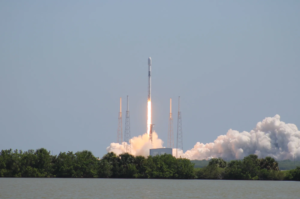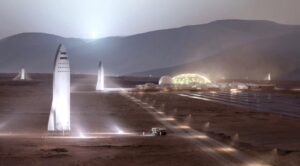
Starship’s Flight Termination System Was Just Installed!
We are only a few days away from Starship’s third integrated test flight as SpaceX completes some of the final pre-launch steps. Just yesterday, for example, we saw the flight termination system explosives moved and installed onto the vehicle. This has always been a great launch indicator as it’s only safe to do so right before an actual launch attempt.
Looking in the past at both IFT-1 and 2, both launches occurred just days after the FTS was installed. To add to this, even SpaceX has announced that March 14th will be the official launch attempt. Here I will go more in-depth into the recent installation, what else SpaceX needs to complete, the plan for IFT-3, and more.
FTS Installation

A few days ago on the 6th SpaceX tweeted saying, “The third flight test of Starship could launch as soon as March 14, pending regulatory approval.” This is a good sign but highlights that there are still a few things that need to be completed such as approval from the FAA. In other words, the company knows they are close to launch but don’t quite have the 100 percent date and time.
The recent FTS spotting however is arguably even more concrete as far launch evidence. Yesterday on the 8th, an image was captured of the explosives being transported to the vehicle. Here you can see 4 guys each with a backpack of explosives. This is practically the same image we saw for the last launch back in November. What’s so significant about this development is the fact that it has always been very closely tied to launch approval. For example, an official FAA statement is quoted saying, “Pre-flight ground operations” shall mean SpaceX’s pre-flight preparations of the Starship-Super Heavy vehicle at Boca Chica, Texas, beginning at the start of Autonomous Flight Termination System ordnance installation for the Starship upper stage vehicle or Super Heavy booster vehicle, whichever occurs first.” In other words, yesterday’s developments would mean that SpaceX is approved for flight or at least heard something and will likely announce sometime soon.
This all has to do with safety and ensuring there aren’t a bunch of explosives attached to the vehicles long before a launch takes place. Looking at the two past launches, we can get a better idea of the time between FTS installation and liftoff. For example, on April 14th, 2023, the FTS was installed and less than a week later on the 20th we watched the first full Starship flight attempt. Also, on the more recent flight, the FTS was installed on November 11th with a launch attempt on the 18th. With this in mind, once we see SpaceX installing this system, we know that a launch is likely a week or less away. This fits in with the March 14th launch date that SpaceX mentioned.
The reason why these explosives are added is to protect range and flight personnel along with surrounding area populations. Essentially, if a missile or space launch vehicle flies on a range in the United States, it must have a flight or thrust termination system (FTS). In the case that things go wrong during flight and the vehicle loses control, for example, the termination system will be activated exploding the launch vehicle in the air. We’ve now seen it used on both previous launch attempts.
Specifically, during the last flight, at vehicle separation, Starship’s upper stage successfully lit all six Raptor engines and flew a normal ascent until approximately seven minutes into the flight, when a planned vent of excess liquid oxygen propellant began. SpaceX confirmed that additional propellant had been loaded on the spacecraft before launch in order to gather data representative of future payload deploy missions and needed to be disposed of prior to reentry to meet required propellant mass targets at splashdown. However, a leak in the aft section of the spacecraft that developed when the liquid oxygen vent was initiated resulted in a combustion event and subsequent fires that led to a loss of communication between the spacecraft’s flight computers. This resulted in a commanded shut down of all six engines prior to completion of the ascent burn, followed by the Autonomous Flight Safety System detecting a mission rule violation and activating the flight termination system, leading to vehicle breakup. The flight test’s conclusion came when the spacecraft was as at an altitude of ~150 km and a velocity of ~24,000 km/h. A safety measure that also happens to be a great indicator of launch readiness.
IFT-3 Upgrades

In addition to final launch prep, we also learned more about some of the upgrades and changes from the last flight to today. In a statement, the company said, “Starship’s second flight test achieved a number of major milestones and provided invaluable data to continue rapidly developing Starship. Each of these flight tests continue to be just that: a test. They aren’t occurring in a lab or on a test stand, but are putting flight hardware in a flight environment to maximize learning.” They went on to say, “The third flight test aims to build on what we’ve learned from previous flights while attempting a number of ambitious objectives, including the successful ascent burn of both stages, opening and closing Starship’s payload door, a propellant transfer demonstration during the upper stage’s coast phase, the first ever re-light of a Raptor engine while in space, and a controlled reentry of Starship.” This highlights that the company is attempting much more than just a standalone launch. If successful, the goal is to gather data on a long list of future projects from lunar starship development to work with Starlink.
As far as the flight profile they mentioned, “It will also fly a new trajectory, with Starship targeted to splashdown in the Indian Ocean. This new flight path enables us to attempt new techniques like in-space engine burns while maximizing public safety. This rapid iterative development approach has been the basis for all of SpaceX’s major innovative advancements, including Falcon, Dragon, and Starlink. Recursive improvement is essential as we work to build a fully reusable transportation system capable of carrying both crew and cargo to Earth orbit, help humanity return to the Moon, and ultimately travel to Mars and beyond” they said.
On the past flights, the plan assuming the upper stage made it past stage separation and began its journey around Earth, was for it to end up off the coast of Hawaii in the Pacific Ocean. This would mean the vehicle would almost complete a full revolution of the Earth. It also would take quite a long time with the company estimating that splashdown would occur about an hour and a half after launch. For this new trajectory which ends earlier, SpaceX expects the landing to occur exactly 1 hour 4 minutes, and 39 seconds after liftoff.
Since the last flight, SpaceX has implemented hardware changes on upcoming Starship vehicles to improve leak reduction, fire protection, and refined operations associated with the propellant vent to increase reliability. They pointed out that “The previously planned move from a hydraulic steering system for the vehicle’s Raptor engines to an entirely electric system also removes potential sources of flammability.” On the bright side, the water-cooled flame deflector and other pad upgrades made after Starship’s first flight test performed as expected, requiring minimal post-launch work to be ready for vehicle tests and the next integrated flight test. Considering the ramp-up in flight tests, this is going to become an even more important feature as time goes on.
They clarified that “Following the flight test, SpaceX led the investigation efforts with oversight from the FAA and participation from NASA, and the National Transportation Safety Board. Upgrades derived from the flight test will debut on the next Starship and Super Heavy vehicles to launch from Starbase on Flight 3. SpaceX is also implementing planned performance upgrades, including the debut of a new electronic Thrust Vector Control system for Starship’s upper stage Raptor engines and improving the speed of propellant loading operations prior to launch.” They finished by saying, “More Starships are ready to fly, putting flight hardware in a flight environment to learn as quickly as possible.”
It’s clear that SpaceX is confident in its hardware and is excited for the next attempt. Even though there have only been two launches so far, they have shown improvement going from an initial flight with a long list of problems and an early ending to getting past stage separation. If they continue this pattern for IFT-3, it’s very possible we watch a fully successful test flight. If that were to happen, the approval process and launch prep for the next test would likely happen much faster and support a fourth test is a month or two. Just over a month ago on February 2nd, the company tweeted saying, “Super Heavy boosters for the next three flights, with a fourth ready to stack, in the Starbase Megabay”. It’s clear they have the hardware needed to continue flying this vehicle at a rapid pace. Something we can look forward to seeing over the course of this year.
Conclusion
SpaceX just installed the flight termination system explosives onto the Flight 3 hardware. This combined with comments from the company suggests a third launch attempt is just a few days away. We will have to wait and see how it progresses and the impact it has on the space industry.



